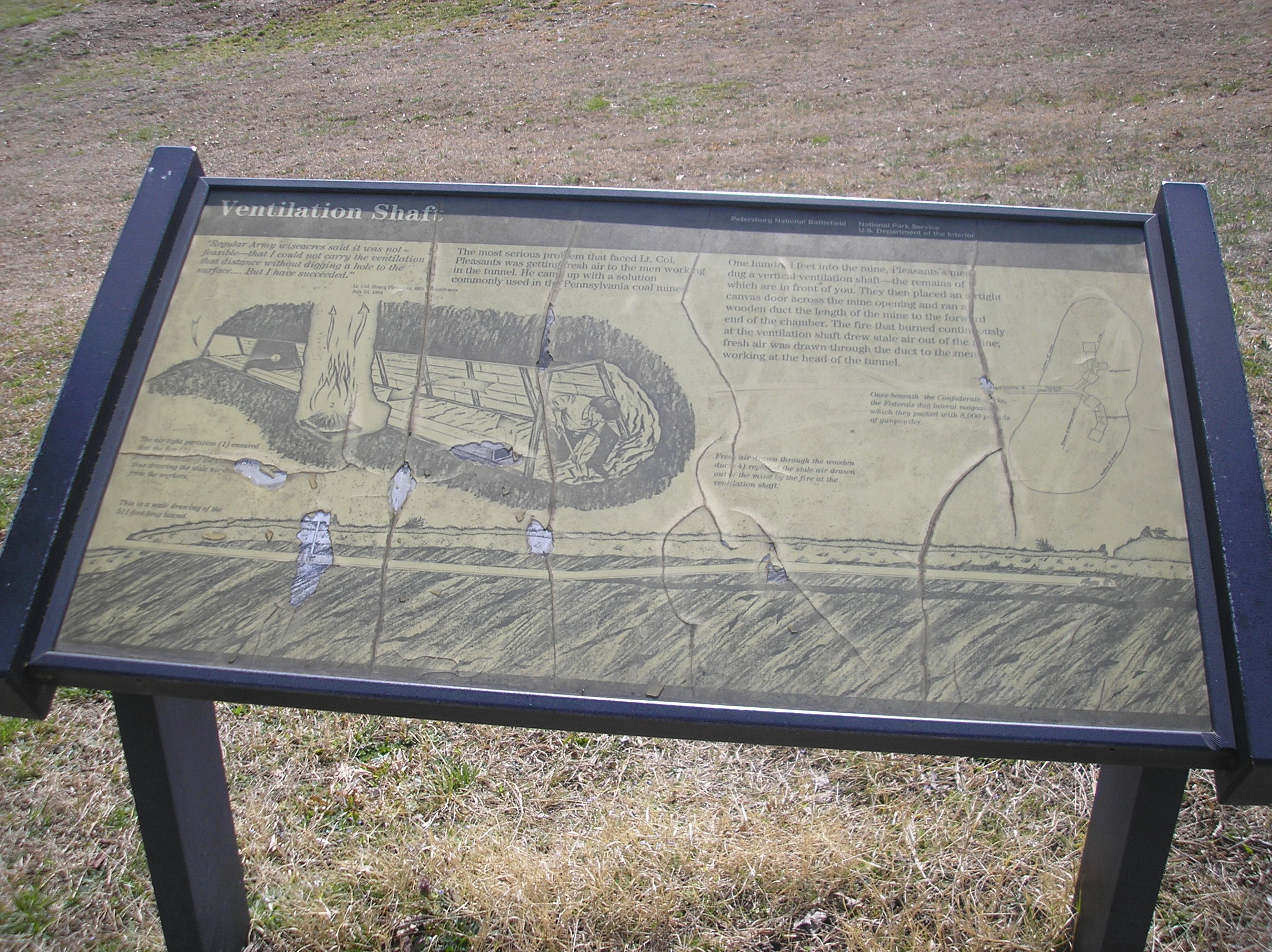Touring the Petersburg National Battlefield – The Crater (Part 1)
Posted By Norman Gasbarro on April 3, 2013
Today’s blog post continues a multi-part series on the Petersburg National Battlefield – that portion of the battlefield which made up the Eastern Front, where the opening assaults and the Battles of the Crater and Fort Stedman occurred. All parts of the series can be accessed by clicking on the series title here, Touring the Petersburg National Battlefield. Recent photographs taken at the battlefield are interspersed with the official, interpretative statements made at the various tour stops as well as statements from the National Park Service brochures and web site. Many men from the Lykens Valley area participated in this battle and the Battle of the Crater itself was noteworthy for the participation of coal miners from Schuylkill County.
Continuing now to Stop 8, The Crater.
Here a Union mine was exploded under a Confederate fort but an infantry attack through the gap failed. Walk the trail and learn about one of the most incredible episodes of the Civil War.
One way to visit “The Crater” is to approach it from the Union side.
The location of the Union picket line is market with oyster shells.
Digging the Mine
“We could blow that damn fort out of existence if we could run a mine shaft under it.” – a Private of the 48th Pennsylvania Infantry
Spurred by the offhand suggestion of a former coal miner, on 25 June 1864, Lieutenant Colonel Henry Pleasants put his 48th Pennsylvania to digging. Their objective: to tunnel under the Confederate line an blow up the battery at Elliott’s Salient.
Beginning on 25 June 1864 and continuing fot the next month, these Pennsylvania coal miners burrowed a shaft 511 feet into the hillside. The they packed four tons of powder into the magazines under the Confederate battery. At 3:15 a.m. on 30 July, Pleasants lit the fuse and scrambled out of the tunnel.
“Regular Army wiseacres said it was not feasible – that I could not carry the ventilation that distance without digging a hole to the surface… But I have succeeded.” – Lieutenant Colonel Pleasants.
The most serious problem that faced Lieutenant Colonel Pleasants was getting fresh air to the men working in the tunnel. He came up with a solution commonly used in the Pennsylvania coal mines.
One hundred feet into the mine, Pleasants’s men dug a vertical ventilation shaft – the remains of which are in front of you. They then placed an airtight canvas door across the mine opening and ran a wooden duct the length of the mine to the forward end of the chamber. The fire that burned continuously at the ventilation shaft drew stale air out of the mine; fresh air was drawn through the duct to the men working at the head of the tunnel.
The Union picket line was where the sign indicates (above left) and the tunnel entrance is in the upper right of the above picture.
Part two of the “The Crater,” will appear tomorrow, with the explosion and results.
 ;
;










Comments